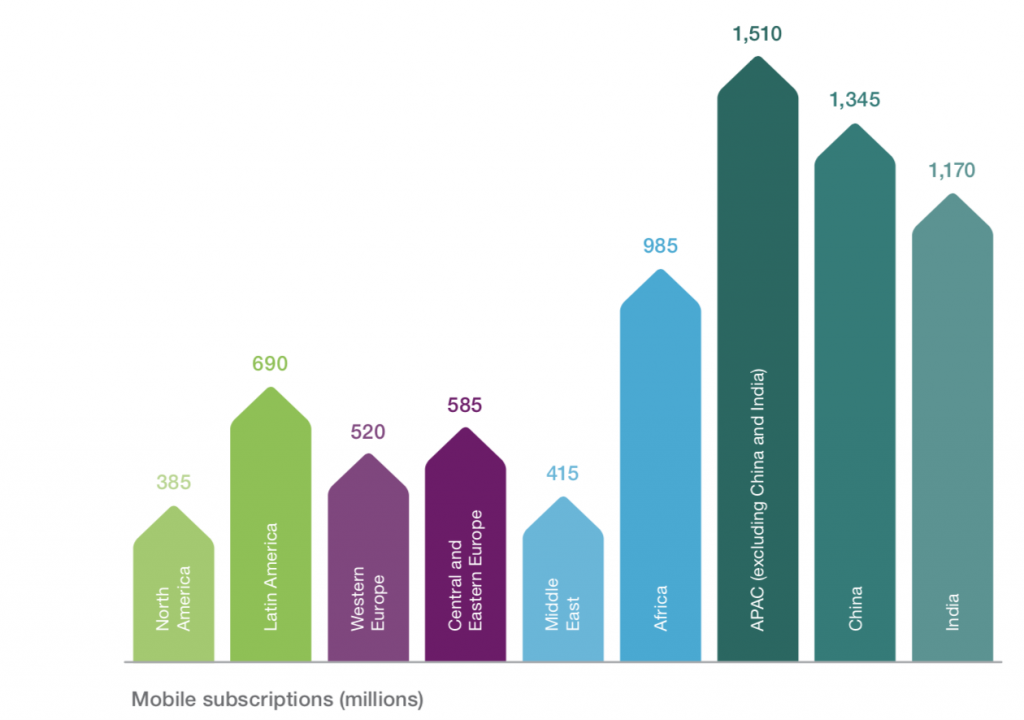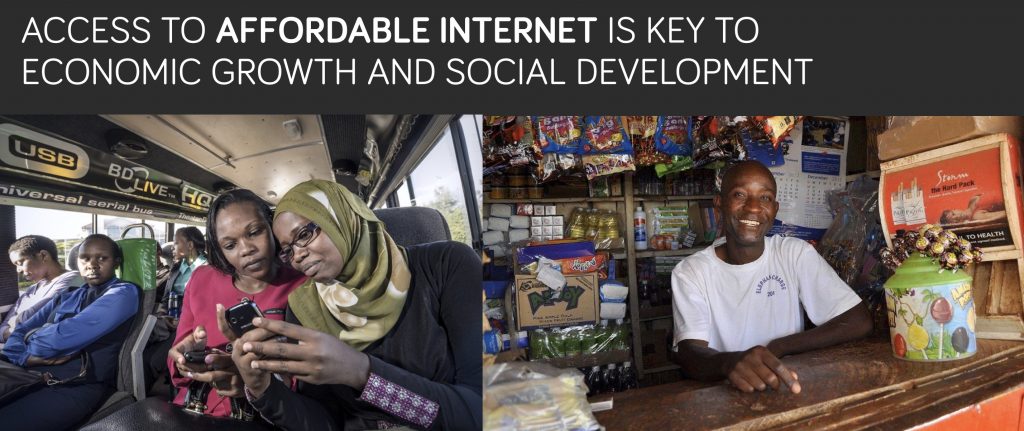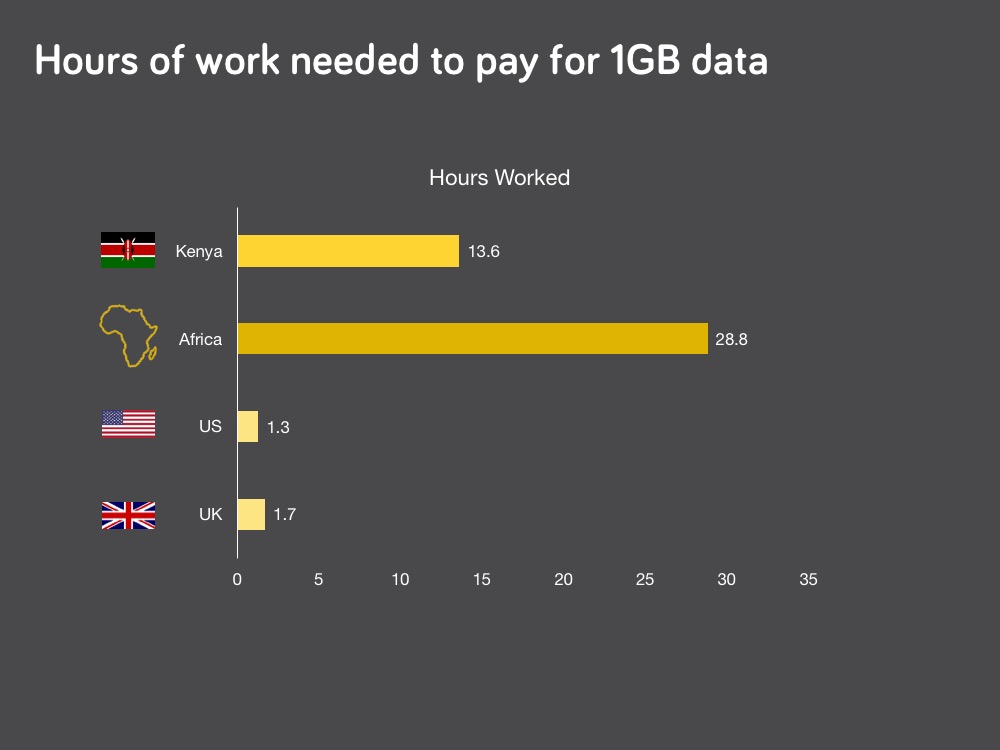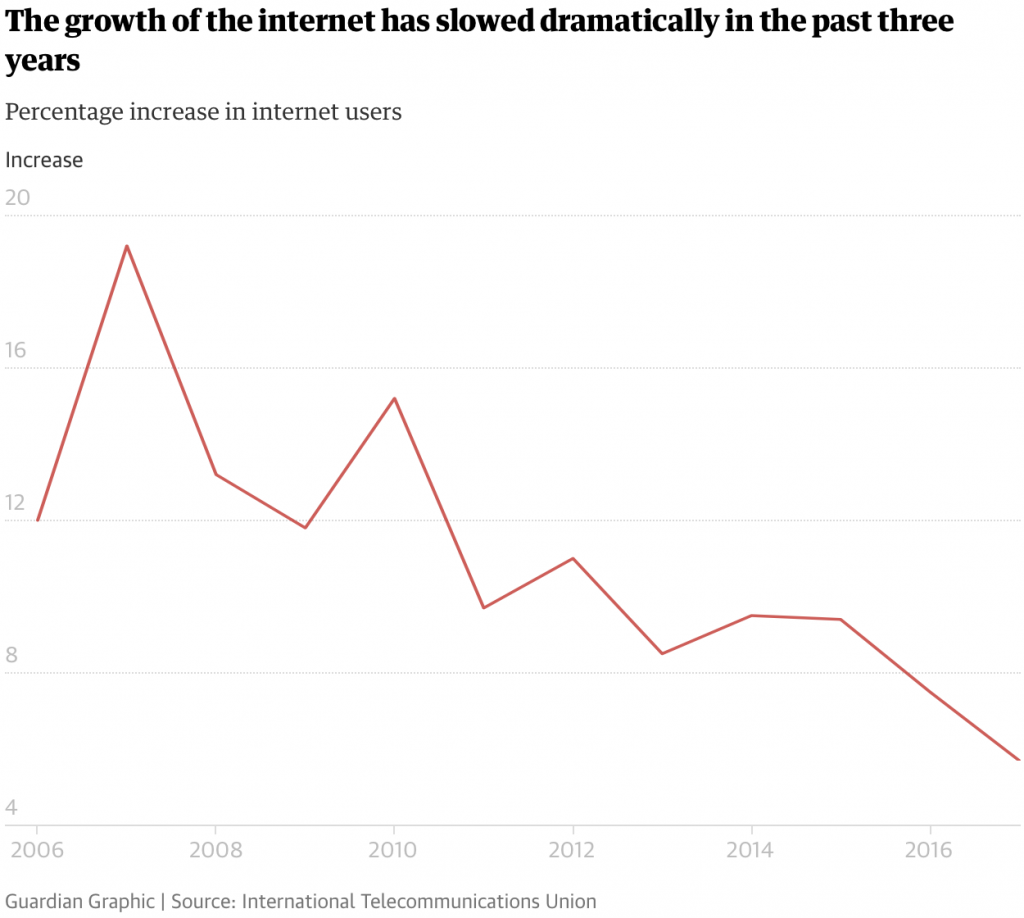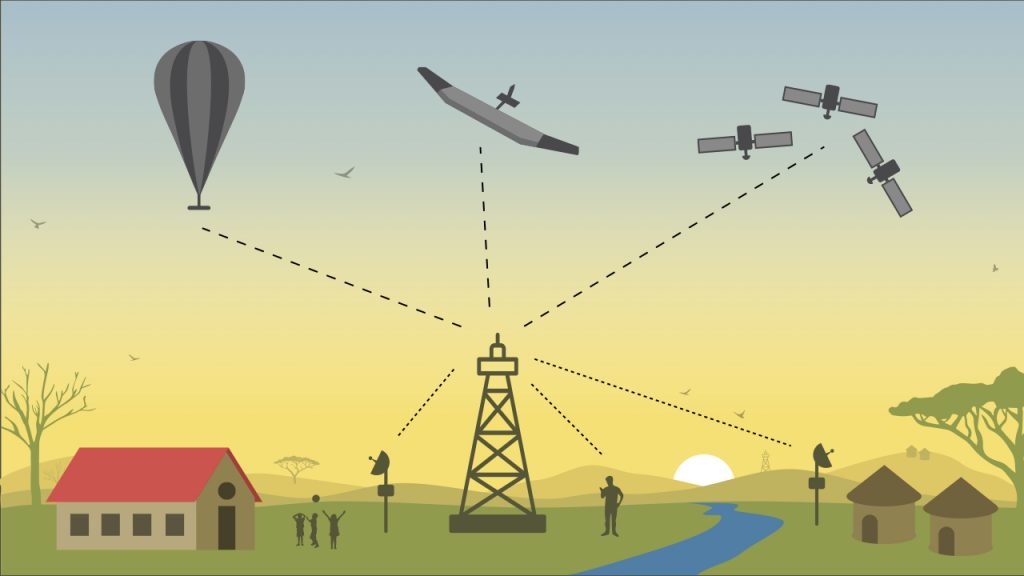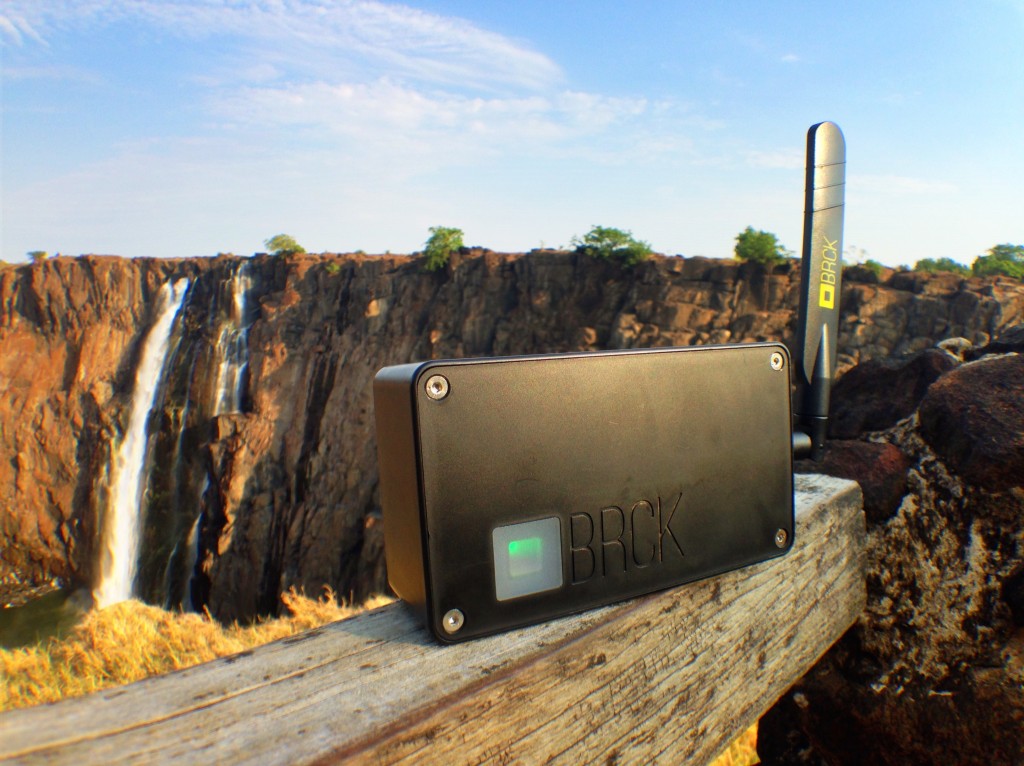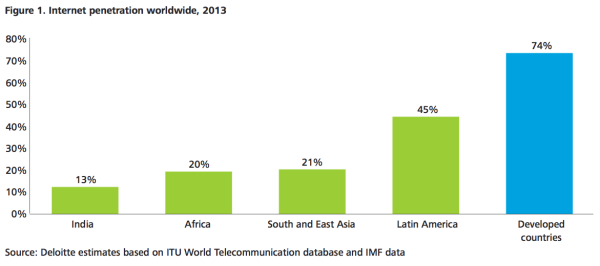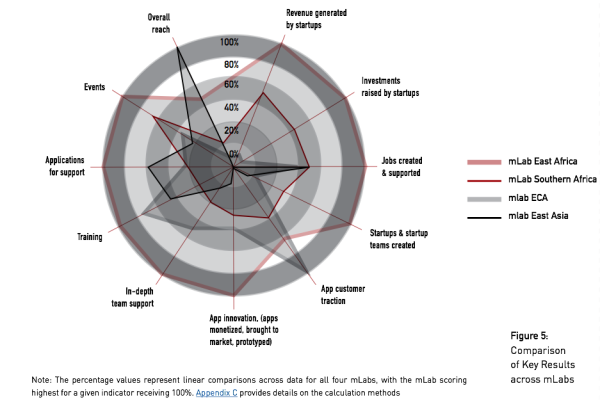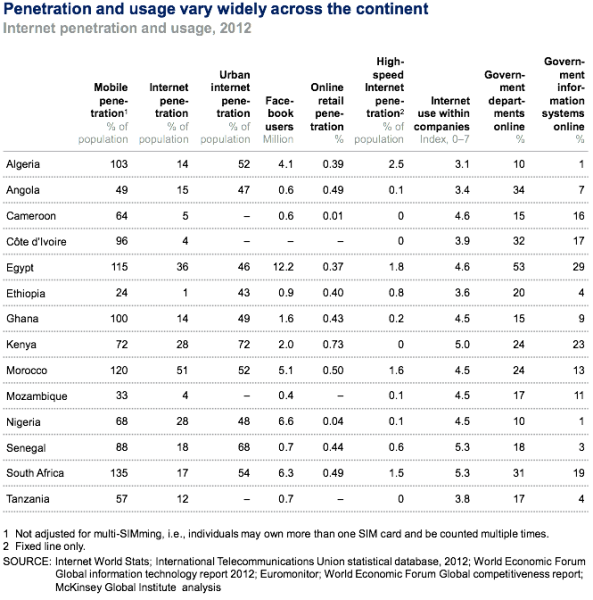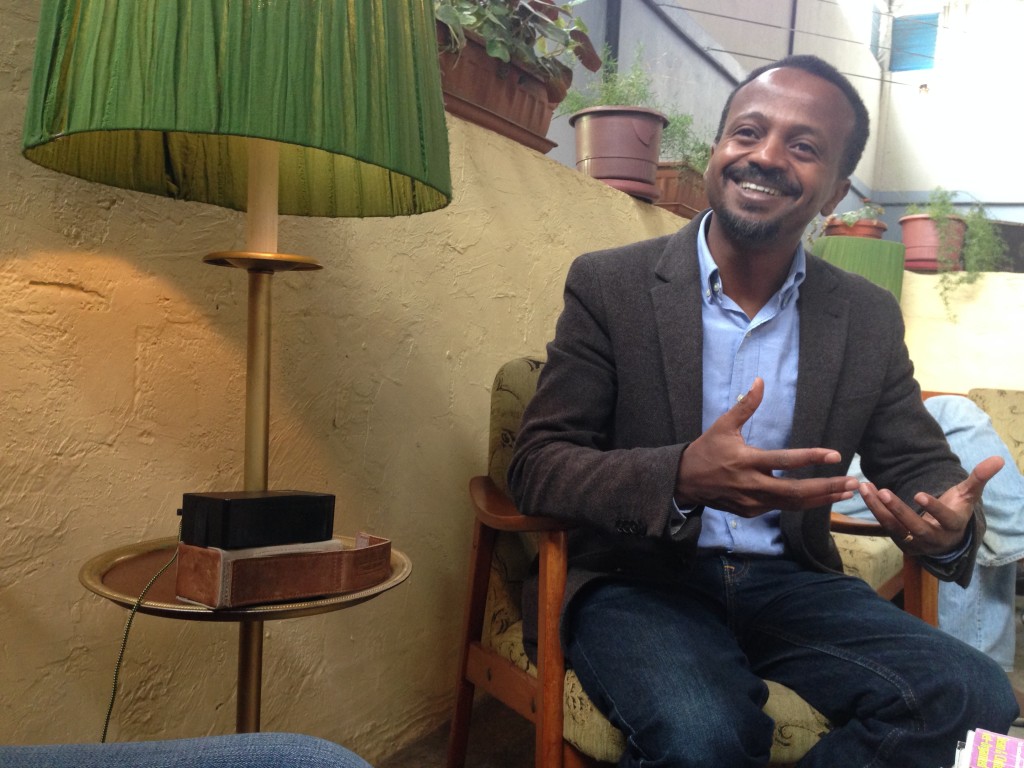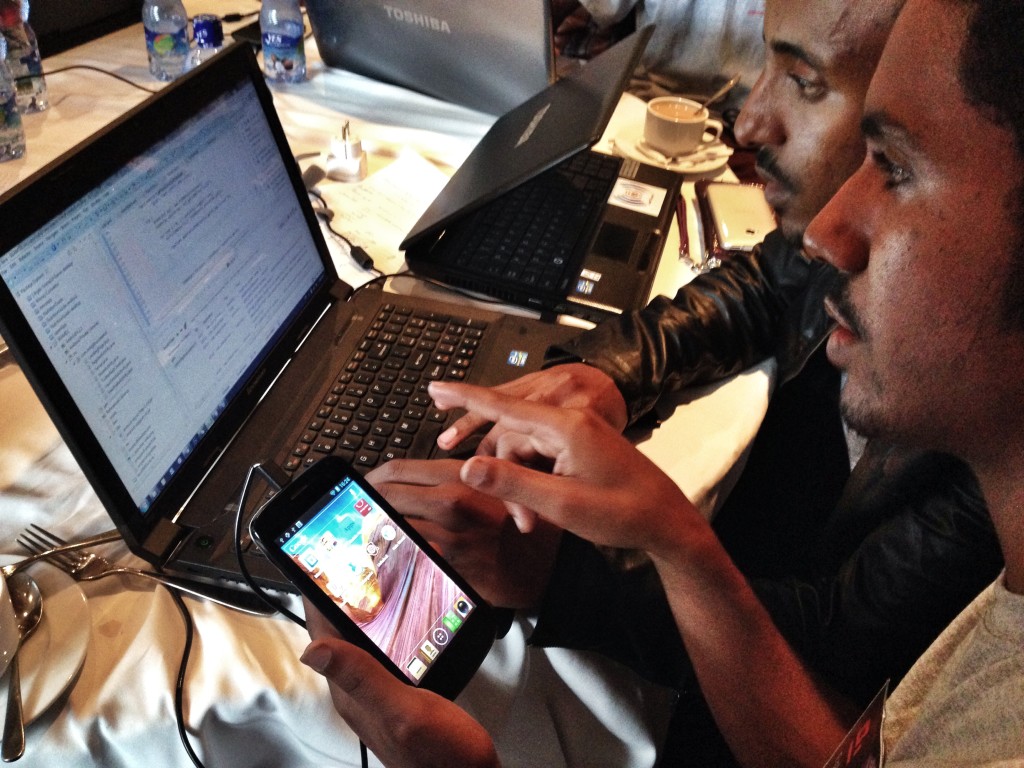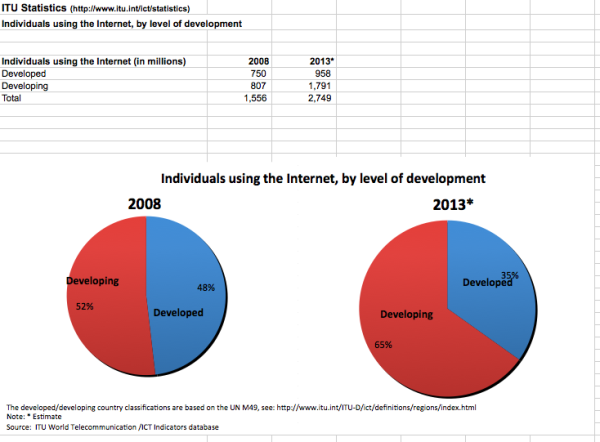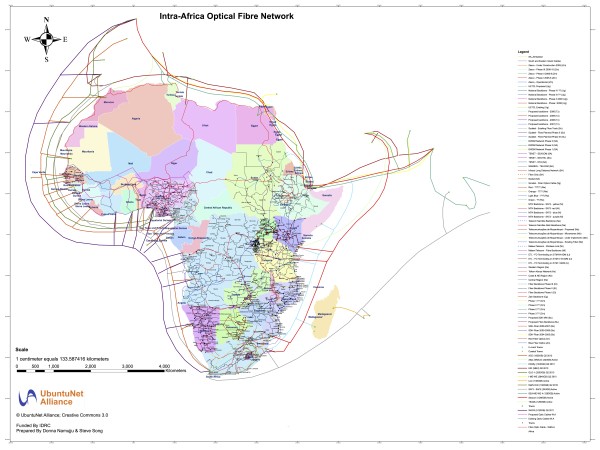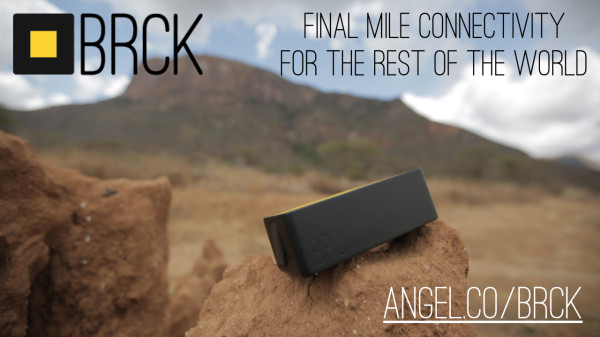What I find interesting is that everyone wants to benefit from a basic underlying availability of connectivity, but few understand what it is or why it is so important. If you’re with me at a public event, I’ll eventually spout off something along the lines of, “you can’t have a 21st century economy without power and connectivity.” This is my simplified way of stating that for any industry to be meaningful on the world stage (or even their own country stage), they need the ability to move data. If power and connectivity are the foundation, then the aforementioned ecommerce, agtech, fintech, and others are all pillars that stand on that foundation.
Economic growth
I’ve written before on how smartphone penetration has reached critical mass and proceeds on a noteworthy trajectory across Africa and other frontier markets. Africa, coming from a largely 2g/Edge based on old legacy GSM technology will have some of the highest growth rates in mobile data subscriptions globally, driven by chat apps and mobile video, as we transition to data-only networks. In 2022, there will be eleven times more mobile data traffic in Central and Eastern Europe and Middle East and Africa (Ericsson 2017).
- 250M smartphone subscribers in 2016
- 770M by 2022 (Y-o-Y growth of 30%) (Ericsson 2017)
- Over half of mobile phone shipments into Africa in 2016 were smartphones (Deloitte 2017)
All of this means that there are millions of new customers available for new, smart, and data-intensive financial products, agricultural services, marketplaces, logistics, and the list goes on. This is why we’re seeing the rise and rise of startups in these spaces, as well there should be.
What we’re not paying attention to is this: the market is still smaller than it could be.
Imagine that you’re finding amazing market traction with your new mobile lending app, or with your logistics system, or with your online goods marketplace. Imagine that you’re doing well, however did you know that you’re only reaching 20% of the people who own smartphones in the country…. Oh, right, that’s the piece that’s surprising! You could be doing even more, growing faster and capturing more market share if only the other 80% of smartphone owners in your market could afford the costs of getting online regularly to use your service.
This is where BRCK is stepping in with our Moja platform (free to consumer internet). You’ll benefit greatly from our growth. We’ll benefit greatly from your growth.
Social development
Even though I’m largely driven by the economic reasoning for connectivity alone, since I believe that the best way for us to make significant change in Africa is to grow wealth for everyday Africans, there is a strong social argument for widespread and affordable connectivity as well.
Connecting an additional 2.5 billion people to the internet would add 2 trillion dollars per year to global GDP and create 140 million jobs
- It enables improvements in health (Deloitte 2014)
- Unlocks universal education (Deloitte 2014)
- Strengthens civil society through public services, social cohesion, and digital inclusion (Deloitte 2014)
It turns out that if we connect people to the largest, greatest network of knowledge and information in the the world, then a lot of great social benefits are realized across a number of important areas. It’s hard to argue against more jobs, better education, better healthcare, more informed citizens, and a stronger civil society in any country.
Connectivity is the foundation
Like everyone else not involved in the plumbing and distribution of the internet, I used to think of this only academically. It’s easy enough to understand and think through intellectually. However, I found that in living it, in dealing with the practicalities of the internet, in coming to know the end-user I began to appreciate just how important connectivity is. Building a new app or service can have big effects, changing the affordability equation for connectivity and you send a shockwave reaching everyone, everywhere.
Sponsor this article: best iphone casinos in canada and grand mondial casino
]]>It takes someone in Africa four days of work to earn 1Gb of internet. In the US and Europe, it takes just two hours to do the same. (note: see bottom for the math on this)
Connectivity can be generally broken down into two buckets:
- Accessibility – which is generally about having the signal for the internet and the devices to connect to it.
- Affordability – the ability to pay for the internet.
There’s a good piece in Wired about the slow down in connectivity around the world. We’ve made great progress in the initial half of the world connecting to the internet, but the remaining half is coming along a lot slower, and at a decreasing speed each year.
“The data shows that growth in global internet access dropped from 19% in 2007 to less than 6% last year” The Guardian
Why?
For the last two decades we’ve been focused on some pretty big population numbers as well as more wealthy demographics; connecting cities (in both first-world and frontier markets) and the relatively prosperous populations of the world wherever they may be. Currently, on the accessibility front we’ve been forced to work in harder areas with less population density, where the numbers for a cell phone tower are slower to show their ROI, and where frankly it’s not worth using our older technology and our older business models to unlock the internet to that population.
So we come to an interesting time in history, where there is a lot of discussion about, “connecting the last 3 billion”, but not a great deal of courage in doing so.
Sidebar: since I’ve been sitting on an airplane for many hours, I watched the movie 1970 movie Patton, which is likely why I’m thinking so much of courage. In it he quotes Frederick the Great (possibly wrongly attributed) as saying:
“L’audace, l’audace. Toujours l’audace.”
“Audacity, audacity. Always audacity.”
And it is about courage. Most people look at the problem of the internet and think about current tech, or even future tech. They try to do something a little bit cheaper, maybe the go all out and and try something truly mind-blowing, such as balloons, satellites or drones. And, they each do play a small part. But, that’s it, small. We’re at a point where even these seemingly world-changing technologies are relatively small since there is a bigger picture that eclipses tech accessibility.
The big picture is that the internet will be free. Everywhere. Eventually.
Which means connecting the next 3 billion is a business model problem, not a technology problem.
If the is true, then let’s keep investing in these marginal accessibility changes. We need them, we truly do. Every time we get a new Viacom satellite, a Safaricom cell tower, a Google Loon balloon, or a new terrestrial cable dug across Africa or Asia, we get a needed marginal improvement. We push the costs down and the accessibility equation goes a tiny bit higher.
But back to courage. In our plans to connect the world to the internet, it doesn’t take a great deal of bravery to invest in a little bit more infrastructure. For these types of initiatives we’ve had our formulas for a decade or more, and we know they work. A few accountants and legal to check the boxes and a couple million more USD gets spent. We know how to charge for it, and that business model has seen but iterative change in two decades. We’ll always need cables and satellites, but in the world where the internet is free for everyone, it’s the business model that needs the most work.
So, how do we solve this business model for free internet? After all, the internet isn’t free, someone always pays.
It doesn’t come from charging a consumer who has limited disposable income. Just like the internet is moving to free in most public spaces in the US and Europe, I believe it will be the same in most of the rest of the world. The answer comes in looking for indirect revenue streams, and there are multiple paths to this.
This is where the big companies have let us down. Not due to their lack of investment, but to their lack of creativity. Whether it’s with satellite companies who provide low cost subscriber models, helping a moderate percentage more of the population get online regularly, or the Google Loons that side with telecom oligopolies, or the ISPs and mobile phone companies that are too deeply entrenched in their legacy business models to make any meaningful change.
Large organizations have a lot of resources. But… these same large organizations don’t think creatively enough about the solution.
Too many resources tends towards lazy problem solving. After all, if you’re a heavyweight going up against a featherweight, your only strategy need be bludgeon your competitor to defeat. In our world, a lot of money starts feeling like a hammer that you can start bludgeoning with – which tends towards solutions like the original “Free Basics” from Facebook, which looked a lot like an organization trying to do the right thing and then realizing that they couldn’t afford to give everyone the whole internet for free, so instead tried to make a good bit of it free – and ended up with a useful walled garden that set a lot of people on edge.
Compounding this is that the people making decisions around the initiatives at these larger organizations are not the entrepreneurs who built the company, they’re middle managers who like to reduce their risk profile inside the organization so that they can maintain their nice salaries and perks.
But, we can make the whole internet free, and we don’t have to buy it. What we need is a bit more creativity in coming up with new business models that represent the future of connectivity, not the past.
So, if big organizations aren’t the answer, and old infrastructure models are just iterative change, then what is the answer?
It’s a combination. Matching up the resources (and capitalist business models) of these large organizations to get these new users onto their platforms, and the creative solutions that come from smaller, hungrier companies give us a wonderful blend. When these two come together, interesting and explosive change can happen.
I’ve seen all of this first hand. Both the marginal change of the aforementioned global organization efforts alone (or worse, paired with some other large organization), as well as the magic of what happens when one of them works with a smaller company that has a real ground game and understands the problem from a different level.
I’m convinced that we’re solving this right now at BRCK, and that’s due in no small part to the infrastructure team we’ve had the chance to work with at Facebook. We’re not the only ones either, I’m seeing some other companies working on some pretty neat solutions too that gives me optimism for actually solving this problem. The only thing we need is more of the large companies to embrace some of these changes and work together with the companies on the ground in Africa, Asia and Latin America.
Appendix
I worked with Akhil, one of my interns, to try to come up with a general number of “hours worked to earn 1Gb of data”. We couldn’t find anything online like this, so took a crack at it in the afternoon. However, I’m sure someone else could get an even more accurate, country-level view than us. Here it is:
Kenya
- % of monthly income spent on 1GB = 9.72% (source: A4AI)
- Average number of hours spent per week for earning the monthly income = 35 hrs (including part-time work) (source: Kenya National Bureau of Statistics)
- Total number of hours spent per month = 35 X 4 weeks = 140 hrs
- Pro-rated % of hours worked per month for spending on 1GB = 9.72% of 140 = 13.6 hrs
Africa-wide
- % of monthly income spent on 1GB = 18% (Source: Reuters)
- Average number of hours spent per week for earning the monthly income = 40 hours (Source: ILO –> however this one is contentious given I’ve just taken the average of where most Africa countries are i.e. between 40-45 hour bracket)
- Total number of hours spent per month = 40 * 4 weeks = 160 hours
- Pro-rated % of hours worked per month for spending on 1GB = 18% of 160 = 28.8 hrs
United States
- % of monthly income spent on 1GB= 0.84% (this is the North American average) (source: A4AI)
- Average number of hours spent per week for earning the monthly income = 40 hrs (source: Bureau of Labor Statistics, USA –> please note I’ve taken the average of 25-54 years old since total population average hours/week is 34.5, which seemed a bit too low given it accounts for 16-20 years as well)
- Total number of hours spent per month = 40 X 4 weeks = 160 hrs
- Pro-rated % of hours worked per month for spending on 1GB = 0.84% of 160 = 1.34 hrs
United Kingdom
- % of monthly income spent on 1GB= ~1% (this is the Europe average) (source: A4AI)
- Average number of hours spent per week for earning the monthly income = 42.3 hrs (source: Eurostat)
- Total number of hours spent per month = 42.3 X 4 weeks = 169.2 hrs
- Pro-rated % of hours worked per month for spending on 1GB = 1% of 169 = 1.69 hrs

We had an idea of what we were getting into back in October 2013, but none of us were sure where it would actually take us. All we knew then was that the barriers to creating hardware had dropped enough for us to get into it, that there was a problem in the internet connectivity space in Africa (and other frontier markets), and that we had the right mixture of skills, naiveté, and optimism to figure it out. Over the next 12 months we grew to a team of 10 that had this the desire to meet a big challenge and believed we could do hard things. As I write this, 8 of those 10 are still at BRCK.
In the intervening years we’ve built 3 full products and taken them to market (BRCK v1, Kio Kit, SupaBRCK), and a fourth (PicoBRCK) that is still in R&D. That alone is quite an accomplishment. I hadn’t known back in 2011 when the idea for creating a device was first hatched, just what the life cycle of building a hardware+software product would be. I do remember having a conversation with an old friend, Robert Fabricant, that I thought we should be done with the first one in about a year. He laughed and said it would be at least 2-3 years. He was mostly right.
I’ve since learned that it takes approximately 18 months for a product to go through the concept, design, testing, productization, and first samples stages. Then it typically takes us another 9 months for iterations and small fixes on hardware to happen, while that same time is spent concurrently hardening up the software side of things. For example, our most recent SupaBRCK took approximately almost two years from conception to product, and then another 6 months of continued fixes/changes to the low-level software and the hardware before it worked well consistently.
Asking the Right Question
You would often hear us saying, “Why do we use hardware designed for London or New York, when we live in Nairobi or New Delhi?” as a way to frame the problem we thought we were solving. It was only in late December 2014, after we had shipped the BRCK v1 to 50+ countries, that we realized we were only partially on the right track.
It turns out the problem isn’t in making the best hardware for connectivity in difficult environments. Sure, that’s part of the equation – making sure that you have the right tools for people to connect to the internet. But the bigger question involves people, who is connecting to the internet and who isn’t? If, after many years of building BRCK, we had built the best, most rugged and reliable solution for internet connectivity, that would be something we could pat each other on our backs for. However, if the problem instead was “How do we get the rest of Africa online?”, and we were able to solve that problem, then that was a legacy we’d be proud to tell our children about one day.

Sitting in our tiny office around Christmas 2014, we started thinking hard about this bigger issue and began doing deeper research into the problems of this loosely defined “connectivity” space. We started doing some user experience research, manon the street interviews, to figure out what the pain points were for people in Kenya.
Connectivity can generally be broken into two buckets:
First, accessibility – can I connect my device to a nearby signal?
Second, affordability – can I afford that connection?
The results were quite telling, it was definitely about affordability.
For everyone who’s not deep in African tech, let me lay out some interesting numbers for you. Accessibility in most of the emerging markets has been moving rapidly since the mid-2000s when we started to get the undersea cables coming into the continent. These cables then went inland and started a rapid increase in available internet connections and wholesale internet costs decreased rapidly. Since 2008 we’ve had more than one million kilometers of cable dug across the continent, and we have over 240,000 cell phone towers. Concurrently, the mobile device prices continued to drop globally, and by 2016 we started to have more smartphones imported into Africa than non-smartphones.
Reaching deeper into the market research, we started to study this affordability problem.
“A4AI found that the average price of 1GB prepaid mobile broadband, when expressed as a % of average per capita Gross National Income (GNI), varied between 0.84% in North America and 17.49% in Africa.”
It turns out that in almost every country in Africa, there is a consistent ratio among all the smartphone owners in a country: 20% could afford to pay for the internet regularly, and an incredible 80% couldn’t.
Interestingly, when we looked at who else was working in this connectivity space, almost everyone was focused on accessibility, not affordability. Those that were focused on affordability thought that just making the price cheaper was enough. What we’ve seen is that if you just make “less expensive” subscription WiFi (as most do), then you’ll capture another 10% of the market. And while that can make a profitable enterprise, it still leaves 70% of the market unaddressed.
This last blue ocean of internet users in Africa, as well as Asia and Latin America, is still largely ignored. Those who do have the resources go to after it tend to try with iterative approaches in both business models around affordability, and only marginal creativeness in solving for technology accessibility.
Moja Means ONE
It’s taken us five years, going through multiple iterations of new tech, building new hardware, and creating new software stacks that go from the firmware up to the cloud. We’ve been mostly quiet for the past year as we put our heads down and tried to take a new platform to market. Where are we now?

“Moja” means “one” in Swahili, and it was the brand name that we chose to call the software platform that we would build on top of the BRCK hardware. While Moja means one, “pamoja” means “together” or “oneness”, and that was the root we were looking for. To us, Moja is the internet for everyone.
We started by trying to make it work on the BRCK v1, but that was a bit like trying to make a sedan do a job built for a lorry (truck) – it wasn’t powerful enough. The SupaBRCK was envisioned as the hardware we could leverage that would allow us to not just have enough of a powerful and enterprise-level router, but a tool that was actually a highly ruggedized micro-data center. With this, we could host content on each device, as well as get people connected to the internet. Another way to think about the accessibility side of what we do is that we have a new model for how a distributed CDN works on a nation-scale, moving away from the centralized model that the rest of the world uses. In environments like Kenya, we can’t continue to just copy and paste models from more developed infrastructure markets, we have to think of new ways to deal with how the undergirding system actually works and operates.
We give the internet away for free to consumers. How does that work if we all know that the internet isn’t free? After all, someone always pays.
The business model is an indirect one. We charge businesses for some form of digital engagement on our Moja platform (app downloads, surveys, or content caching), and the free internet to our consumers is a by-product of this b2b business model. Like everyone else, we thought we could do it with advertising at first. But we realized that our unique hardware capabilities allowed us some other options, since advertising is a poor option for all but a few of the biggest global tech platforms.
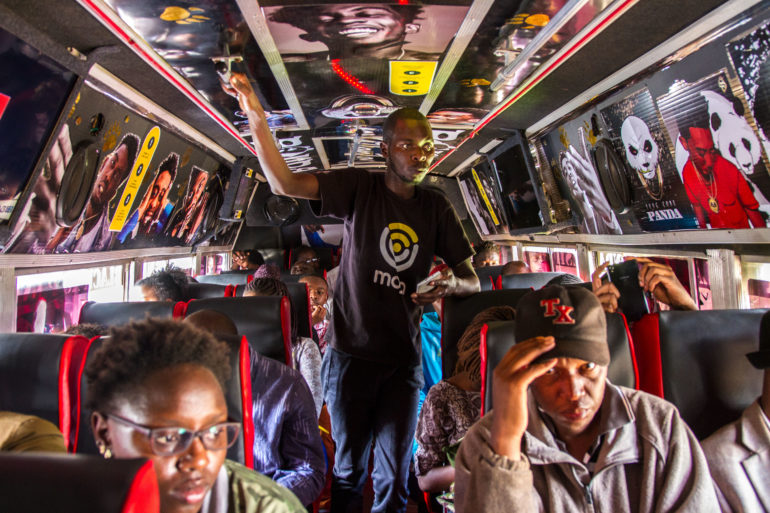
Today we’ve deployed 850 of the SupaBRCK’s running our Moja software into public transportation (buses and matatus) in Kenya and Rwanda. They’ve been quite successful with almost 1/4 million unique users monthly in just the first 3 months. We have both a tested and working technology platform, as well as product market fit. With unit economics that make sense, a growing user base, and a business model that works, we’re excited for the growth phase of the business. This next step means going nation-scale in each of these countries, and also determining our next market to enter.

It’s important that ordinary people across Africa and other frontier markets can stop thinking about the costs of the internet and don’t have to turn off their mobile internet on the smartphones that they already have in their pockets.
Once they know they can afford it, the way they used the internet changes dramatically. An Internet like this is feasible today, and it’s a cheaper, faster, more distributed and resilient one. It’s also being built from the ground up in Africa, where we’re close to both the technology and human problems, and have a better chance of building a the right thing.
Thoughts and Lessons Over 5 Years
First, make sure it’s a big enough problem.
If you’re going to spend 5+ years of your life on something, make sure it’s something that matters. At BRCK we are creating the onramp to the internet for anyone to connect to the internet, and a distribution platform for organizations trying to reach them. If we succeed we only succeed at scale, which by its nature means that we’ve done something big and that it has made a large impact on people.
Second, figure out what to focus on.
When you start out it’s difficult to determine product market fit. We started with a wide funnel of possibilities for our technology, industries that we could target and consumer plays. Over time, we were able to narrow down what could work, and what we could actually do, to the point where we focused on this big “connecting people” problem. We did detour into education with our Kio Kit, which we still think is one of the best (if not the best) holistic solutions for emerging market schools – after all, it’s in places across Africa, as well as the Pacific Islands and as far as Mexico. However, it proved to be too costly for our bottom line to hold inventory, sales cycles are too long, and it was largely a product sale. When we realized that, we started to focus most of our efforts on the bigger underlying issue across all of the markets, which was affordable connectivity and our Moja platform.
Third, persistence trumps skill.
building hardware is hard. It’s even harder doing it in Africa. The upside however is that you’re both closer to the problem, and that if you succeed in figuring it out, you have a good head start on everyone else. The process takes time, costs money, and there are people and organizations who don’t want you to succeed. It always takes longer than you want to get software working properly, or hardware built and reliable. We’ve often been faced by that same problem that plagues all venture backed companies in Africa, in that you have to do a lot of education to investors to even raise the capital, and then when you do you get charged a premium for perceived risk. Partner organizations take resources and time to work with, and they don’t always come through on their promises. All of these things (and more) mean that the best ideas don’t always win in the market, because it’s those that push the hardest and longest that win.
Fourth, it’s the people you do it with.
If you’re going to be on a journey that takes a great deal of time, with intense pressure, and where success is not guaranteed, then you had better do it with people that you can trust, who you can work with, and it helps if you like them too. Throughout my work career I’ve been more fortunate than most (whether at Ushahidi, iHub or BRCK), and this time is no exception. I get to work with a host of wonderful people; not just smart and talented, but also genuinely good human beings. It makes work a joyful challenge, not an exhausting chore.
So, to those back in the day who believed we could do this when it was just a sketch in my notebook, thank you Shuler, Kobia, Nat and Juliana (and the rest of the team at Ushahidi). To our investors who have joined us in this dream of connecting and doing hard things, you’ve continued to step up and that has made this possible. Thank you.
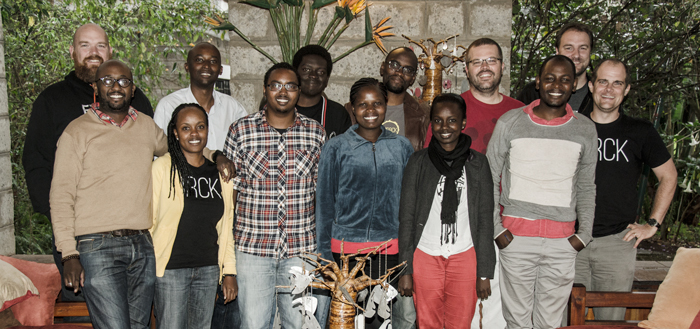
To Jeff, Janet, Birir, Kurt, Barre, and Oira, thank you for sticking it out for all these years and stepping up to more leadership challenges as we’ve evolved. To Philip, Reg, and Kala, I want to thank you for making the impossible happen, time and again, each for more than 5+ years.
]]>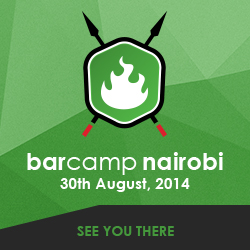 Barcamp Nairobi 2014 is set to begin, seven years after the first one was held. It’s one of those events that brings people out of the woodwork around the city, where techies who don’t normally meet end up having great conversations, and relationships are formed.
Barcamp Nairobi 2014 is set to begin, seven years after the first one was held. It’s one of those events that brings people out of the woodwork around the city, where techies who don’t normally meet end up having great conversations, and relationships are formed.
This Saturday, Aug 30th at 08:00, your chance to lead a conversation on something interesting begins. Nailab and iHub are hosting it, and we’re expecting 400 people to show up for the event.
Go register now, if you haven’t already, it’s free.
It was while sitting around after Barcamp Nairobi 2008 that the seed for what would become the iHub was planted, and why this post was written (many old blog posts from 2008 here). Many of the people I work with today on the teams at BRCK and Ushahidi were at these same events over the years.
Past Barcamp Nairobi Pics
Discussion topics
You’re the one who decides what the discussion will be, and we’ve seen everything from “how to make yoghurt” to “Python 101” to “blogging for women” conversations (and everything in between).
This year, there’s bound to be some discussions around government surveillance and personal privacy in Kenya.
We entrust our most sensitive, private, and important information to private technology companies. At the same time the increasing usage of technology has attracted the attention of authorities eager to provide caveats on the openness of the Internet and the range of freedoms, which we enjoy online.
That’s sure to be a firestorm, of the best kind…
]]>Tomorrow (Wed, July 9th) we have a launch event happening at Sarit Centre for our Nairobi friends and media, starting at 9am, where we take over our partner Sandstorm‘s store for the day. We’ll be there all day, so come on buy if you can make it. You’ll be able to use the devices and ask questions from anyone on the BRCK team.
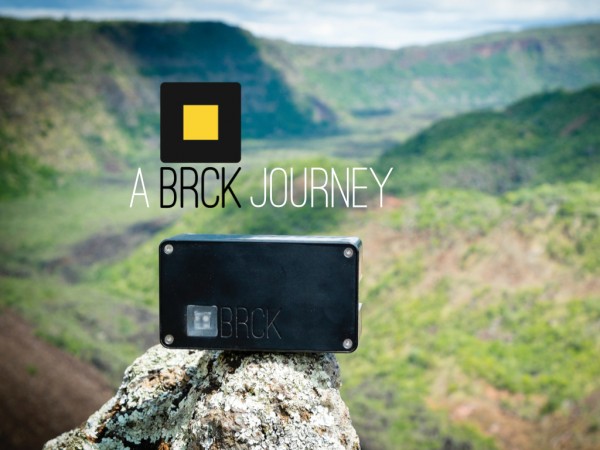
The BRCK is a rugged, self-powered, mobile WiFi device which connects people and things to the internet in areas of the world with poor infrastructure, all managed via a cloud-based interface.
It is designed and engineered right here in Nairobi, with components from Asia, and final assembly done in the USA. Specs here.
the Journey
Most people heard about the BRCK a year ago when we ran our Kickstarter campaign that raised $172k. What a lot of people don’t know is that the journey started long before that, 1.5 years earlier in fact.
Back in November of 2011 I was in South Africa for AfricaCom, and it was in a discussion with my good friend Henk Kleynhans (the founder and then-CEO of SkyRove) that we started talking about routers. Knowing nothing about routers, I asked him why he didn’t build his own, to which I think the answer was something like, “that’s hard” and it wasn’t their core business anyway.
Later on that evening I was flying back to Kenya and I started pondering what it would be like if we built a router made for our own environment – something that would give us good solid connectivity in Africa. I started sketching out the first ideas around what would be in the BRCK, what it would need, etc. When I landed in Nairobi, I started talking to the Ushahidi team about this, and whether anyone wanted to try prototyping this with me in their free time.
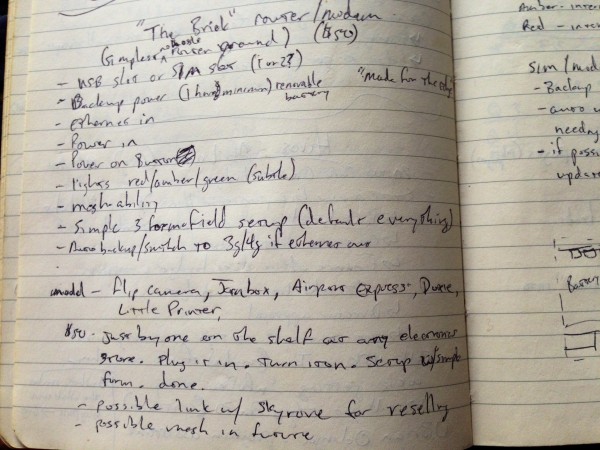
My initial notes on the BRCK in the airplane, thinking through what it should be, basic features, and products I liked.
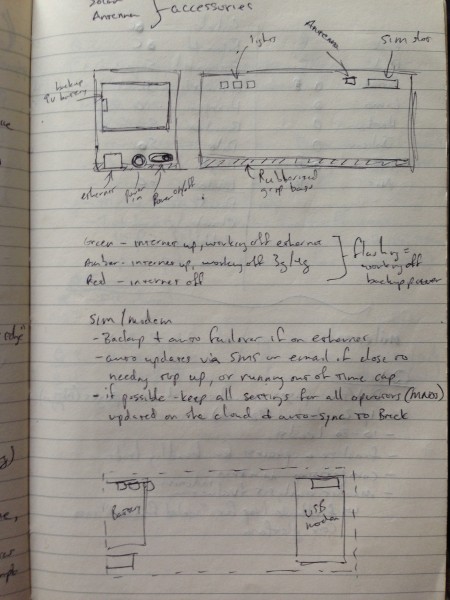
Initial BRCK sketch, drawn in my notebook in November 2011. You can tell I hadn’t a clue as to where things should go yet, it was just barebones features and simplicity was key.
With the problems we have around power and reliable internet connectivity in Nairobi, we all had an itch to do something, and so we did.
The 1.5 years between that point and the Kickstarter was filled with Jonathan Shuler doing a number of early prototypes, Brandon Rosage hammering out an early brand and design, and Brian Muita getting into the guts of the software. Sometime in there was a walk with Ken Banks in a field in Cambridgeshire, discussing what this future product could be as a company. Then there was the entry of Philip Walton, volunteering his time to do the first truly functional designs that married the components and some customized firmware, throwing it all into an Otterbox case, held together by Sugru and tape, to make sure it worked (seem image below). Then Reg Orton came along in late 2012 and started volunteering his time and knowledge around case and PCB design, and started to professionalize our hardware production. All of this culminated in a working prototype.
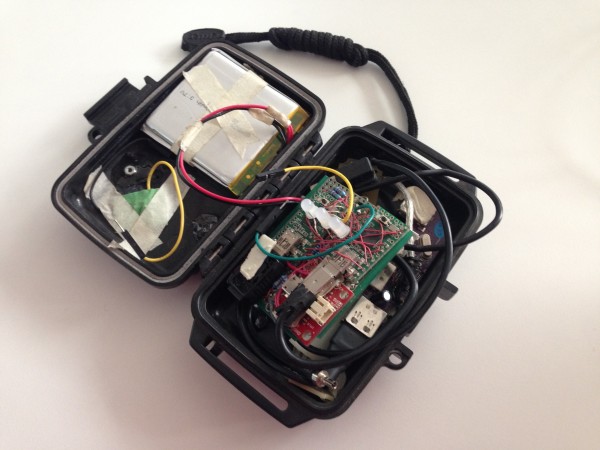
An Early BRCK Prototype from mid- 2012
We ran the Kickstarter in June last year to test the market, to see if there were others who thought this BRCK device was cool, useful and something that they would purchase. It worked out well, and we found out that there were a number of business types who wanted something just like this.
Then the real work began.
From Prototype to Production
It’s fairly easy today to prototype a cool new device, we did that for 1.5 years with many iterations even before we did our Kickstarter in June last year. When you go to production though, that’s a whole different beast, and we ended up spending a year from our Kickstarter until today going through more levels of prototypes before we finalized on our production-level hardware back in February. Keep in mind, that’s with people on the team, like our CTO Reg Orton, who have been in this hardware space for 12+ years.
There’s also the software integration issue that had a lot of unknowns which we couldn’t tell in advance. It’s not just hardware we’re building but an integrated software and hardware package that consists of hardware + firmware + cloud. Fortunately we’ve got some pretty amazing problem solvers who don’t seem to sleep on our team, between the heroics of our COO Philip Walton and cloud lead Emmanuel Kala, we were able to find workarounds and put together a robust BRCK management package.
What I’m getting at is this – software is hard to get done well. Hardware is harder. Software plus hardware is amazingly complex, and it’s easy to underestimate the level of difficulty in what seems like a simple device.
It’s been a battle, one with multiple fronts and many setbacks along the way. We’ve had our modem supplier go end-of-life on one of our core components, and subsequently had to find a new supplier and redesign our board and case. We’ve found crazy bugs in OpenWRT that took us weeks to figure out a way to work around. We’ve mixed in some fairly harsh testing of the BRCK in some of Kenya’s hardest environments, and we’ve seen it perform and change the way a business can do their work. We’ve also seen our earliest users loading up education materials on it for schools that aren’t fully on the grid.
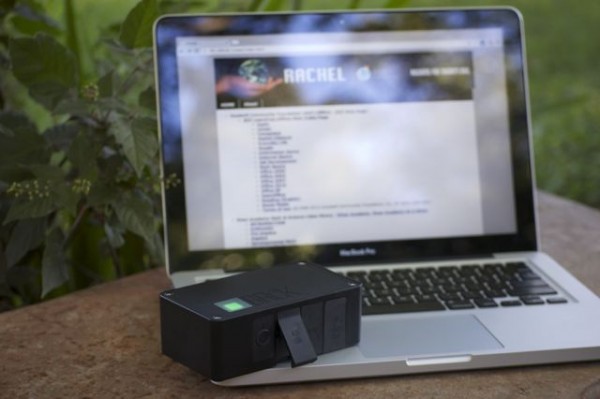
Rachel running on a BRCK in Uganda, by Johnny Long (more on their Education page).
We’re finally there, after many, many months.
Some Thanks
It’s with great gratitude to my BRCK partners and team that I say thanks for pushing through. I’m also extremely grateful to Ushahidi, especially David and Juliana, and the Board, for helping push the BRCK through, even in those early days of 2012 when it seemed so crazy. None of this could have been done without a few brave souls willing to risk some money on us, to our seed round of investors who came together and put in $1.2m, which meant we could hire more people and build an amazing team.
Finally, our biggest debt of gratitude goes to our early backers, those of you who over a year ago put some money into this little black box. You will have your BRCKs soon, and we hope that they live up to your expectations. After all this time, I can say I’m probably more excited about getting them into your hands than you are in getting them! 
1. The Akamai “State of the Internet” Q3 2013 report
[Akamai Report – PDF Download]
Has good information on overall usage globally, and trends. In Africa, even though they have a node in Kenya, all we’re seeing is stats on South Africa, Egypt and Morocco. However, there is a really fascinating chart by Ericsson in it on wireless usage.
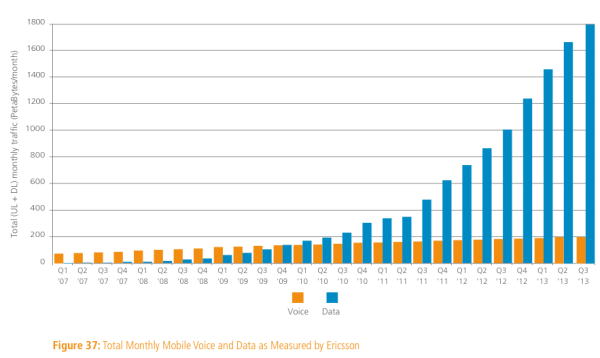
Mobile data vs voice growth globally – 2013
2. GSMA’s “Digital Entrepreneurship in Kenya” report 2014
[GSMA – Entrepreneurship in Kenya report 2014 – PDF Download]
The GSMA puts together some fantastic reports, due to the amount of data at their fingertips due to their association’s membership. Alongside the iHub Research team, they’ve done a deep dive into the tech entrepreneurship side of Kenya, and you can see the results here.
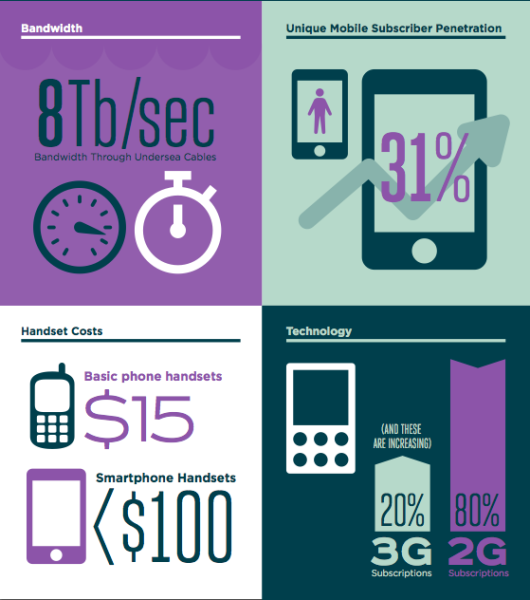
3. Deloitte’s “Value of connectivity” report 2014
[Deloitte’s – Extending Internet Connectivity report 2014 – PDF Download]
The Deloitte folks do a study and argue that an increase in internet penetration could have a large impact on an emerging market country’s GDP.
“Deloitte estimates that the resulting economic activity could generate $2.2 trillion in additional GDP, a 72% increase in the GDP growth rate, and more than 140 million new jobs.”
4. infoDev’s “The Business Models of mLabs and mHubs” report 2014
[The Business Models of mLabs and mHubs 2014 – PDF Download]
I’ve had a front-row seat to infoDev’s work starting and supporting places like the m:lab in East Africa. After doing it for 3 years, here’s their indepth report on what’s working, not working, how much money has been spent and what the future might look like.
5. McKinsey’s “The Internet’s transformative potential in Africa” report 2013
[MGI Lions go digital_Full report_Nov 2013 – PDF Download]
Mostly useful due to the interest large corporates and banks put in McKinsey, this report makes that the greatest impact of the internet in Africa is likely to be concentrated in six sectors: financial services, education, health, retail, agriculture, and government. What they’ve done particularly well is gather a large range of numbers from diverse and various sources to make better sense of what’s going on.
]]>IceAddis
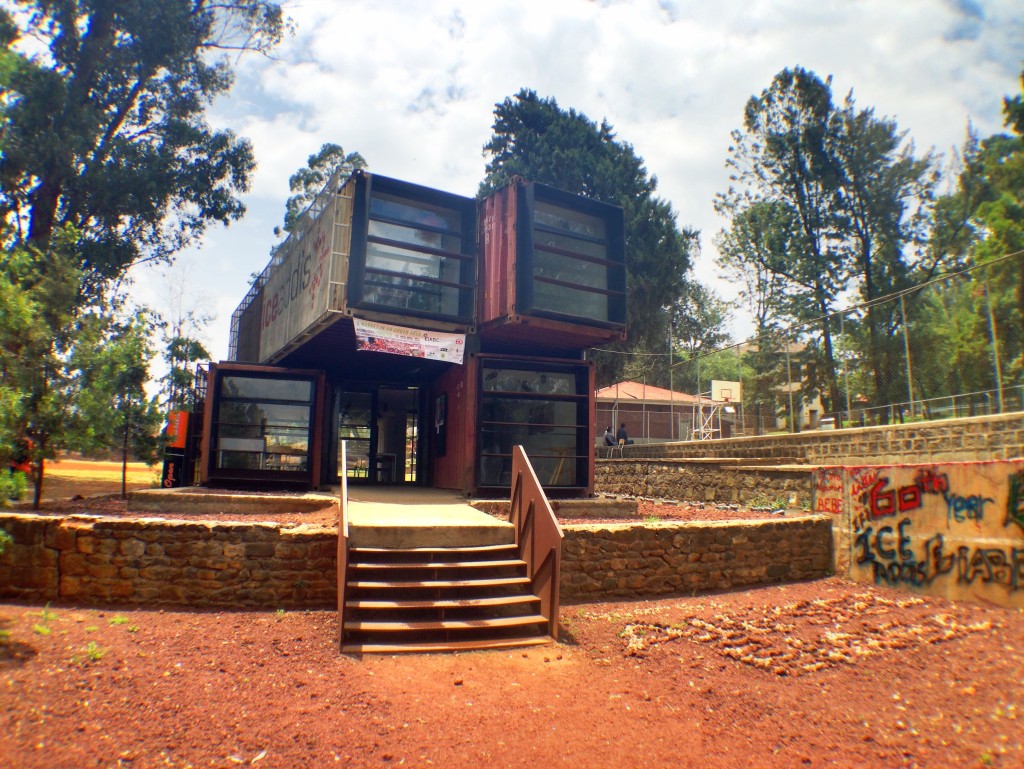
IceAddis – made from 6 shipping containers
IceAddis is renowned in the African tech hub community for their amazing design. This is for good reason, as they sit on the EiABC, the architectural and design school at the university. They’ve been part of the AfriLabs network from early on, and one of their co-founders, Oliver, was kind enough to pick me up and take me to see the space.
There is a semi-finalist from Ethiopia in this years Pivot East event, for the first time ever, and it’s not surprising that they came from IceAddis. In fact, I ran into one of the founders in Addis, and I’m excited to see a company from a new country in this year’s event.
Online Hisab (Ethiopia): Online Hisab is a cloud-based accounting package for Ethiopian SMEs, who are looking for an affordable and easy to use accounting solution.
I’ve never been a fan of seeing tech hubs or labs showing up on university campuses (as I’ve never been a fan of government run/setup ones). The team at IceAddis confirmed why. Due to the amounts of bureaucracy inherent in the system, it makes doing anything almost impossible. Their space was fairly empty when I came through, likely due to time of the day, but this also might be due to location in town or due to being on campus.
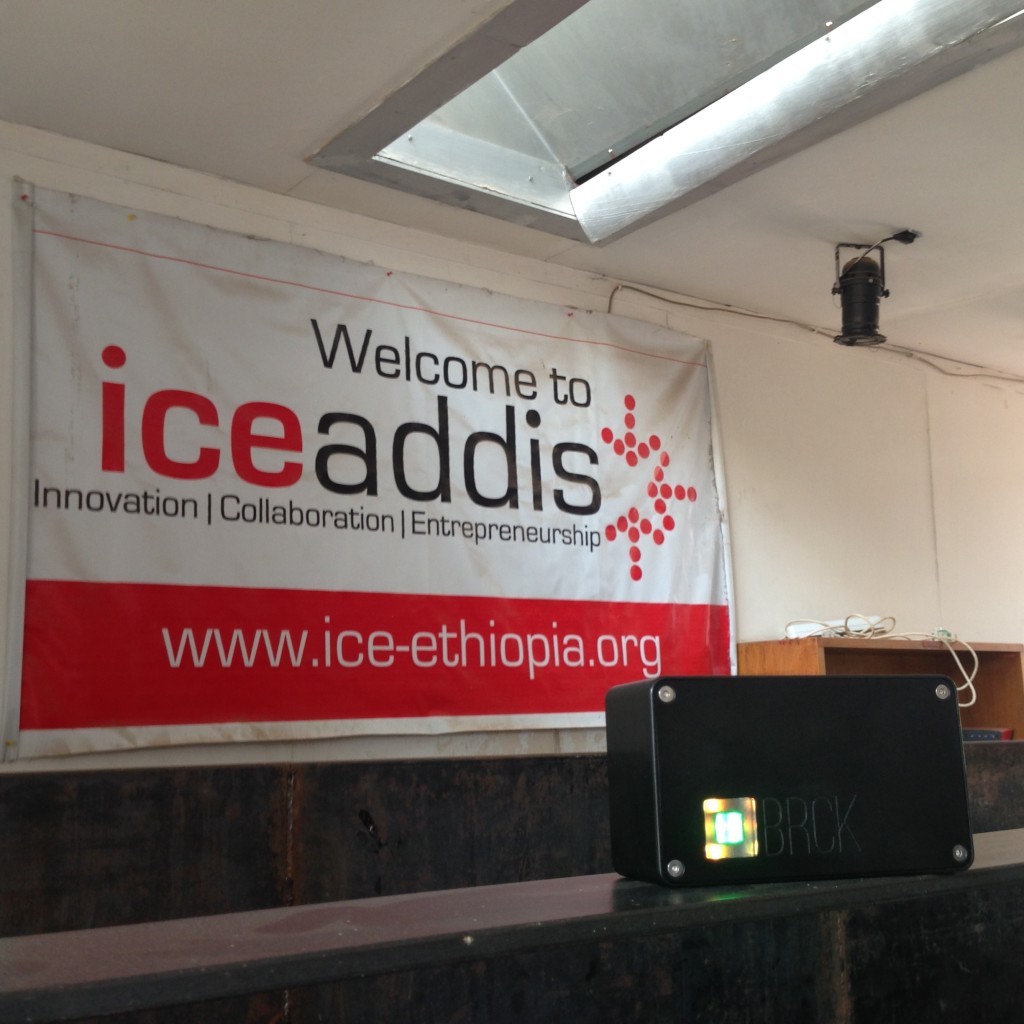
The BRCK in IceAddis – useful as the university network was down
One really great thing I got to see was their maker space, which is only used by the architectural school, but they do some amazing things with it and it holds great promise. Now, if only Ethiopia would bring some consistency to component and equipment import regulations.
xHub

xHub – Ethiopia’s newest tech hub (possible logo)
I wasn’t sure what to expect, to be honest, and was thinking that they might be better served by joining with IceAddis. However, after talking at length with Teddy and seeing the location, I changed my mind and realized that there was indeed room for both spaces in the community. The community badly needs a space that is enterprise and entrepreneur-focused, that is welcoming to the business community.
First, the xHub space is amazing. The building that it’s at and floors it can take up are just what you’d expect from a top-end community tech hub in one of Africa’s major capitals. If they can wring a deal out of the landlord for the roof space, it’ll be the best event space on the continent.
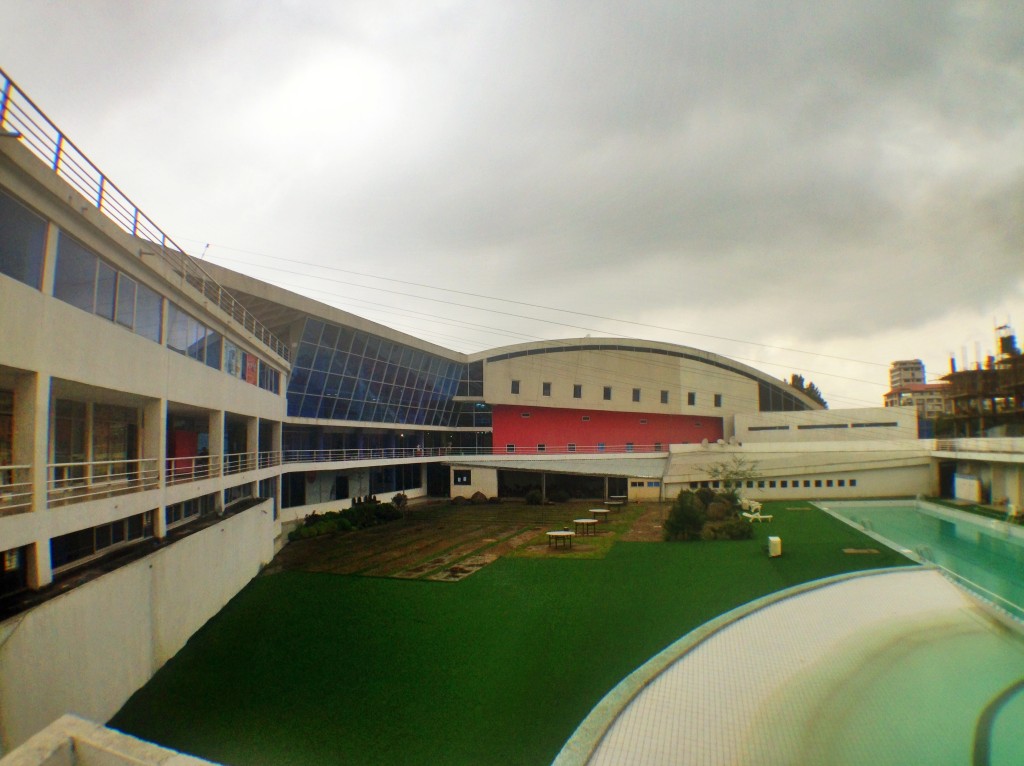
xHub in Addis – they would be on the left side of this picture
The plan is to get the community involved in the build-out, design and use of the xHub right away, and have the space in a usable fit and condition with 4-6 weeks. I’m excited about it, and I know the community is as well, as I talked to a number of young entrepreneurs and coders later that day.
Thoughts on the Addis Tech Community
After a lot of discussions with the tech hub leaders, a few tech entrepreneurs, over a dozen computer science and engineering students, and then experiencing the internet in Ethiopia, I came away with a few thoughts.
- The tech community in Addis is smart, hungry and realizes the potential of the country they live in. It felt a little like Nairobi in 2005, where there was this growing desire to get connected (faster), build businesses and show up on the global stage.
- The infrastructure of connectivity in Ethiopia is constrained by government monopoly on telcoms (mobile) and internet, so they really struggle for good service.
- Due to their foreign currency trade restrictions, investors aren’t keen to work in the market too deeply. This means funding and access to other markets are hard.
- With the size of the local market (some 80 million people) they realize there is a home market, and some of the businesses are honing in on the b2b and public-sector opportunities.
I’m curious as to what will happen next. The tech hubs seem like the best vector, since they provide a nexus point for activities and people finding each other. Being in a country where government control is so heavy, these tech hubs have to work with the government, and I hope that this will open doors and increase the flow of capital into the startups rather than constrain them.
]]>In a world of 7 billion people, 4.2 billion still can’t access the internet. 3.8 billion of whom live in emerging markets, specifically Africa, the Middle East and Asia.
Market research in this space is fascinating, because as we look at penetration rates we see that even though the lion’s share of internet is being driven by the developed world, that that in fact only one in three internet users comes from those countries. 65% of internet users are from the developing world today, 35% from the developed.
The takeaway here is that most everyone’s assumptions about the internet are wrong. The fastest growth is already in the emerging markets, and that growth is only accelerating. If you’re going to pick a place to put your money, it’s not in the US or Europe, it’s in Africa, the Middle East and Asia.
My new job is to truly understand these numbers. As I talk to investors about investing in BRCK, our new router/modem/smart battery device made for this part of the world, I’m expected to know about the market. So I know things like this: if only 24% in the developing world are connected to the internet, then BRCK targeting 1% of these 3.8 billion unconnected people means a potential market size of $7.7 billion.
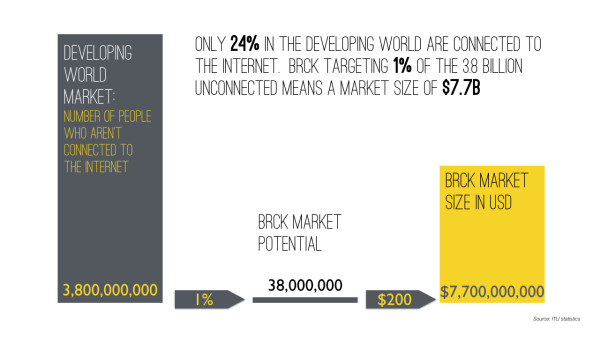
Only 24% in the developing world are connected to the internet. BRCK targeting 1% of the 3.8 billion unconnected means a market size of $7.7B
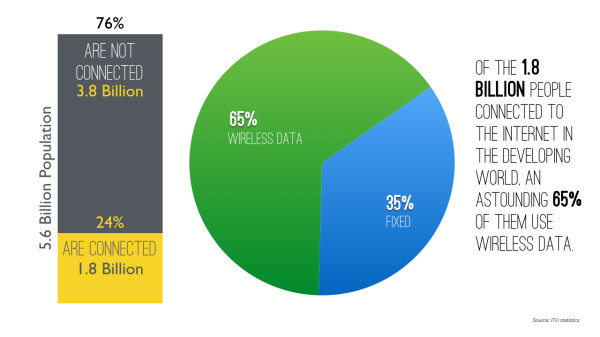
Of the 1.8 billion people connected to the internet in the developing world, An astounding 65% of them use Wireless Data.
That’s a big number, and it’s why I’m so excited about the future.
[Stats source: ITU]
Infrastructure plays
In an earlier blog post I talked about the “rail lines of connectivity“, talking about the pioneering engineers of yesteryear who built the railroads, and who’s rails we still ride on for communication today. Where Physically connecting people and things was the great challenge of their time, digitally connecting people and information is the great challenge of ours.
There are other big infrastructure plays right now, specifically in communications, and heavily internet-focused. If the 90’s and 2000’s were characterized by the rise of mobile infrastructure, the 2010’s are equally characterized by the internet.
It started with the undersea cables in the late 2000’s, and is now about terrestrial cable and growth in technologies that cost less but spread over greater regions. The race is on to connect the world – at least to build the road and rails for the internet, if not the driveways into people’s homes and offices.
For the former, Google’s just-launched “Project Link” in Uganda underscores an intent to increase speeds and decrease costs by providing Google fiber on the continent. There’s also no lack of investment available for companies digging trenches for terrestrial cable across the African continent, this is private equity fund territory, and it’s booming.
Both Google and Microsoft are experimenting with the widely available TV White Spaces spectrum, which can spread wider and costs less other solutions over broad areas of dispersed populations. Then there is Project Loon, a true moonshot idea by Google to cover wide areas of the developing world with internet balloons floating at 20km.
I’m often asked why the BRCK is so important for internet growth in Africa and other parts of the world with poor infrastructure. This is why: so many focus on building the backbone, and so few focus on the last-mile, the end user.
The large international tech companies are putting a lot of effort into cracking open the developing world market as it’s where the growth for the next ten years comes from. We all need this, and I’m a big fan of what both Google and Microsoft (as well as the private equity investors) are doing.
We also need tools that work here, devices that are created to work in areas where there might be connectivity, but no power. Where the roads are still dirt and dust and rain affect all of you your electronics. The BRCK was designed for this world, it’s designed in Kenya (where we live) and it’s this last-mile problem that we are committed to solving.
We’re taking investment right now, closing a convertible debt round in mid-December. If you want to take part of this seismic shift in the internet, you can join us at https://angel.co/brck.
]]>As I was getting ready for my talk at PopTech I started thinking about how those engineers of yesteryear connected the world. Since man had first tamed the horse, we had never moved as quickly or as consistently as when the railroad was created. It was a true changing of the world.
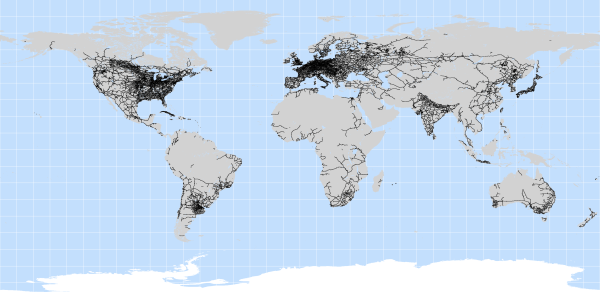
A map of global railway lines
There were many incredible obstacles for the pioneering engineers of that time to overcome.
Kenya’s railway museum reminds of us this rich history of overcoming obstacles with the story of Lt. Col. John Henry Patterson who at the ripe age of 31 was commissioned by the British East Africa Company to help extend the East Africa Railway (EAR) through the Tsavo region on the way from Mombasa to Uganda. It was at the Tsavo river that the unfolding of the great “Man Eaters of Tsavo” lion story unfolds, where two extremely large male lions stopped the railroad’s progress for the better part of a year. Official railway records state 28 died, though 140+ is a more accurate number as it constitutes the non-railway employees taken as well. No matter what the thousands of Indians and African workers did, they couldn’t stop the lions from jumping the thorn bushes, entering tents and braving the fires. Too many nights friends and co-workers were dragged screaming and eaten within hearing distance. It was enough that the workers started to flee in their hundreds.
Now for Col. Patterson, being a stalwart Man of Empire, this was a true crisis. His arrival had coincided with the attacks, so he was to blame by many. He was being disgraced and by any means necessary, he had to get the job done. Fortunately he had served a number of years in India and was an accomplished tiger hunter. 9 months later, Patterson bags both lions in the span of three weeks, changing his story from one of scapegoat and failure to one of a hero. Of course the book he wrote about it didn’t hurt his reputation either – and many of us know this story from the 1996 movie where Val Kilmer plays Col. Patterson in “The Ghost and the Darkness”.
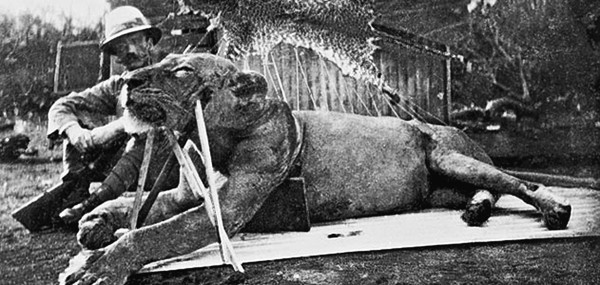
Col. Patterson and one of the man eaters of Tsavo lions
If these pioneers were alive today, what would be their frontier?
Physically connecting people and things was the great challenge of their time. Digitally connecting people and information is the great challenge of ours.
They drove this iron backbone into every continent. It is no coincidence that our new backbones run alongside these same rails and roads. The world over, the engineers of our day are building this internet connectivity through fiberoptic cable into every continent, and Africa is no different.
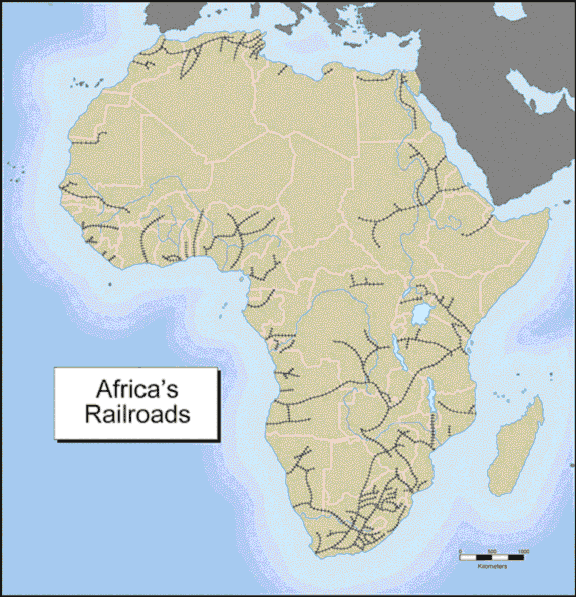
A map of the railway lines in Africa
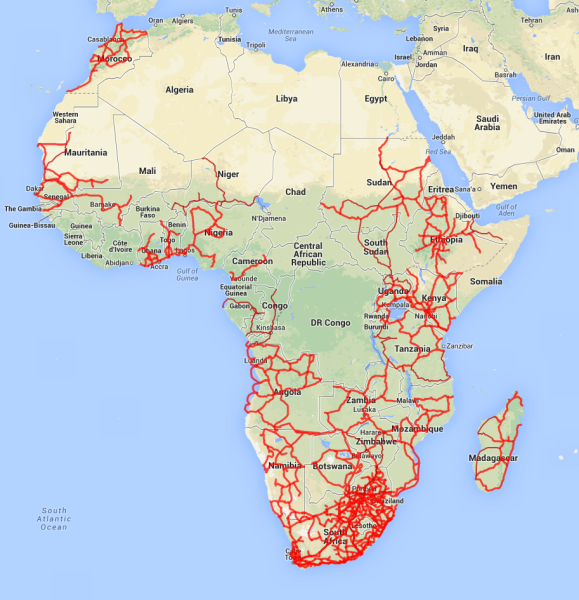
A map of the internet terrestrial fiber optic cables in Africa
(Once again, we all owe a debt to Steve Song for his maps of Internet in Africa, with this terrestrial cable map. A more detailed PDF.)
Terrestrial Internet Backbones and the Obstacles of Today
We have our own obstacles today. For, though we build the internet backbone into Africa, what happens when the rail ends? We have a problem where the infrastructure doesn’t match the connectivity equipment; meaning burnt out servers and routers due to power surges and brown-outs. This caused us to ask, “why are we using the routers and modems designed for London and New York when we live in Nairobi and New Delhi?”
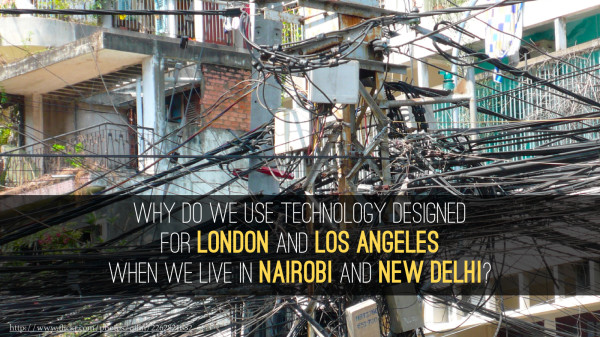
With the BRCK, we’re extending the rail lines of connectivity to the edges of the network.
BRCK provides true last mile connection for Africa and other emerging markets. We designed it for our own needs, in Nairobi. It’s a rugged and simple WiFi device, made for our challenging environment where all of the redundancies of the device for both power and internet connectivity equate to productivity. It connects both people and sensors.
We envision it being used him homes and offices around the continent, by travelers, workers and community health workers in rural areas and by organizations managing everything from water flow sensor to remote power station management on the edges of the grid.
While all of the big technology companies go after “the next big thing”, where they endeavor to stretch the edges of what’s possible with technology, most of the world sits unable to take advantage of the older technology. High-end and brilliant technology is being transplanted from the US and EU to Africa – it is the best technology in the world, it just doesn’t work were we live.
It has become clear that no one else is taking this problem seriously. It’s time for us, as African technologists, to stand up and solve our own problems. To grasp the opportunities. We might even find that the addressable market is much larger and lucrative than our Western counterparts are aware of.
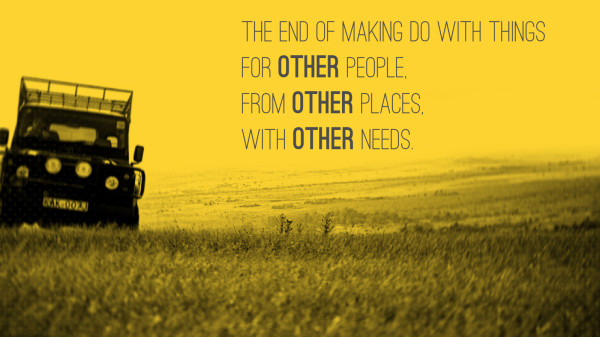
It’s the end of making do with things designed for other people, from other places with other needs. We’re entering a time where good enough is no longer good enough. The BRCK is just one of many new products that are designed for us, by us and meets our needs.
What’s next for BRCK?
We’re raising a round of investment now for BRCK, you can find out more on Angel List at Angel.co/BRCK. The IP is held by Ushahidi, and the BRCK has spun out as an independent commercial entity in a way that if it does well, so does Ushahidi. We have a strong business strategy, and a fantastic team with which to execute it.
This coming week we are traveling to the far edges of the network as we chase the November 3rd solar eclipse. The BRCK will be stress tested to it’s very limit, for ruggedness, connectivity and reach. If we get the VSat (BGan) connection we’re looking for, then we might be able to live stream the solar eclipse on Nov 3rd at 2:15pm from the edges of Lake Turkana to the rest of the world. Follow the BRCK Blog, and my own here, for updates as we go.
]]>he iHub started in March 2010, so it’s been about 3.5 years and a lot has happened here in the intervening years. Many people ask me, “so, what has the iHub done?” The best way I could think of to answer that is to just list as much as I could think of, so here’s a rather exhaustive list, though I’m sure that I’m missing some things.
Why Tech Hubs in Africa Exist
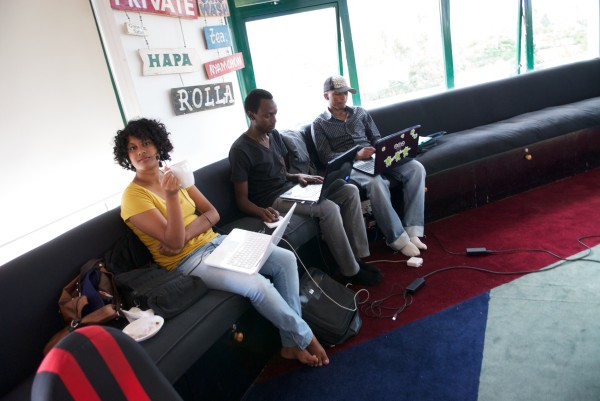
Nairobi tech community working at the iHub, circa 2011
Before I get into that though, maybe a framing on why tech hubs exist is important. They’re not just there for startups, in fact our thoughts on incubation and products going back to 2010 was just pre-incubation and connecting to other businesses and investors. Places like the iHub exist to connect this community together, while we get involved in other gaps that exist in the market (UX, incubation, research, etc), these are just part of providing a place where serendipity happens for those who are involved across the network.
These spaces are more than just nurturing talented entrepreneurs, and to not see that means you’re missing the bigger picture on why they exist. They’re not only about entrepreneurs, though we have seen some of them grow from nothing to 40-person orgs that run across multiple countries.
The tech hubs in Africa are more than just places focused on products, much of what goes on is about connecting the people within the tech community in that area to each other and to the greater global industry. For instance, we started Pivot in East Africa, an annual event that does two things: First, it created a culture where the entrepreneurs learned how to pitch their products. Second, it gave a reason for local and global investors and media to come and see what’s going on. Both funding and media coverage have resulted.
Another example is the connecting of global tech companies to local developers, the training that comes out of it for everyone from network operators to Android devs. Google, Samsung and Intel all play strongly in that space.
Some work at increasing the viability and skillsets of freelancers. Whether they’re web designers or PHP software engineers increasing their understanding of how to setup a company, know what IP law is about, take training on project management or quality assurance testing – these all add up to a community that is evolving and becoming more professional.
Those are just a few of the things that tech hubs do across Africa. I can speak for the iHub in Kenya, but know that there are others such as ccHub in Nigeria, Banta Labs in Senegal, ActivSpaces in Cameroon and the other 19 tech hubs in the Afrilabs network are all doing amazing things that create a base for new innovative products, services and models to grow out of. There are new models for ecosystem development around tech in Africa revolving around these technology hubs that are, and will breed, more innovation over time.
New initiatives and organizations from the iHub:
m:lab – first tech incubator in Kenya (2011)
Mobile testing room – all the tablets and phones from the manufacturers (2011)
iHub Research – tech focused research arm (2011)
UX Lab – first user experience lab in East Africa (2012)
iHub Consulting – an effort to connect freelancers to training and businesses (2012)
Savannah Fund – a funding and accelerator program (2012)
Cluster – first open supercomputer cluster in East Africa (2013)
Gearbox – an open makerspace for rapid prototyping (2013)
Code FC – iHub Football Club
Volunteer Network team – the iHub internet network was setup, and is run by, volunteers
Startups who met, work, or started in the iHub:
BitYarn
NikoHapa
KopoKopo
M-Farm
BRCK
Eneza Education
Ma3Route
Uhasibu
Fomobi
Whive
Zege Technologies
Afroes Games
iDaktari
MedAfrica
SleepOut
M-shop
Angani.co
Wezatele
AkiraChix
Upstart Africa
Juakali
CrowdPesa
Elimu
iCow
Sprint Interactive
Lipisha
6 Degrees / The Phone book
Pesatalk
Skoobox
Waabeh
MamaTele
RevWebolution
Smart Blackboard – Mukeli Mobile
Not all groups start their company at the iHub, but they do meet their future business partners there. The Rupu founders met at an iHub event, and subsequently went on to grow their business, the same is true of companies like Skyline Design, and probably many others who we don’t even know about.
It turns out that serendipity is intrinsically hard to measure.
Larger events, groups and meetings:
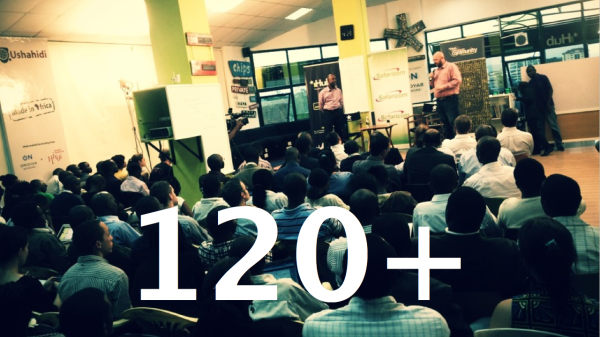
One of the 120+ events that takes place at the iHub each year.
- Pivot East – annual pitching competition for East Africa’s mobile startups
- iHub Robotics (now Gearbox community) meet-ups and build nights
- EANOG – East Africa Network Operators Group
- Kids Hacker Camp – 40 kids hack on Arduino, learn about robotics and sensors in a week long full-day hackathon, in partnership with IBM
- NRBuzz – A monthly event on sharing research on new technologies and communication
- Summer Data Jam – an annual 6-weeks training on Research and Data
- Tajriba – month-long user experience event
- m:lab mobile training – 22 students, 4 months, business and mobile programming (2 years to date)
- Legal month – annual event with visiting legal professionals leading workshops
- Barcamp Nairobi (2010, 2011, 2013)
- Waza Experience – volunteer outreach initiative to expose Kenyan youth to technology and spur creative thinking, problem solving, and better communication skills
- Fireside Chats – A session for VIP and seasoned speakers
- Mobile Monday
- Wireless Wednesday
- JumpStart Series
- Pitch Night
- iHub Livewire – music concert by the iHub community
- iHub Research Coffee Hour
- We have a Policy Formulation Team which consists of Jessica Musila, Martin Obuya Paul Muchene, and Jimmy Gitonga. Each one of us sits or has sat through a policy formulation process, such as the AU CyberSecurity (Martin and Paul) and MySociety, Mzalendo (Jessica Musila) and National Broadband Strategy (Jimmy Gitonga).
Outreach events
Egerton University
Catholic University
Kabarak University (Nakuru)
JKUAT (Juja)
Dedan Kimathi (Nyeri)
Maseno University
Nelson Mandela University – Arusha
Strathmore / Intel
University of Nairobi – School of Computing and Informatics
Research-related activities:
Launching of the Data Science and Visualization Lab – 2013
First Summer Data Jam Training – 2013
Research published:
- Digital libraries and crowdsourcing – http://bit.ly/1boQpeI
- The Gap Between Mobile Application Developers and Poor Consumers: Lessons from Kenya. Proceedings of CPRsouth8. September 2013.
- 3Vs Framework for Crowdsourcing. August 2013.
- Umati Final Report June 2013.
- Umati: Kenyan Online Discourse to Catalyze and Counter Violence. IFIP 2013 Conference Proceedings. May 2013.
- Startup Business Models and Challenges for East African mAgriculture Innovations. IST 2013 Conference Proceedings.
- Mobile Phone Usage at the Base of the Pyramid in Kenya. InfoDev World Bank. December 2012.
- M-governance: Exploratory Survey on Kenyan Service Delivery and Government Interaction. IST 2012 Conference Proceedings.
- Increasing Kenya Open Data Consumption: A Design Thinking Approach. Proceedings of ICEGov 2012.
- Meshcasting News in the Port Harcourt Waterfronts. Internews. May 2012.
- Development of Local Educational Digital Content For Schools In Kenya Using The Mobile Device As An Acceleration Tool To Enhance Learning And Facilitate Collaborative Learning
- Growth Of Mobile Education Platforms And The Impact On Learning In Primary Schools In Kenya
List of infographics created (PDF Links):
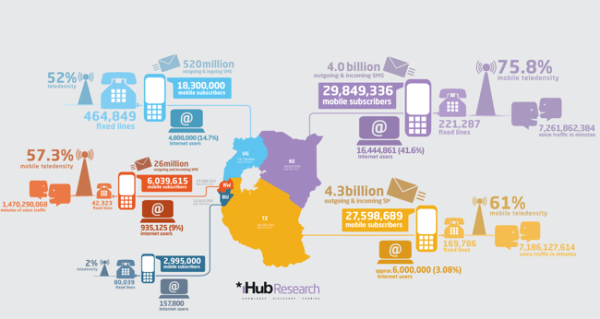
Mobile Technology in Tanzania: 2011
Mobile Technology in Uganda: 2010/2011
Mobile Technology in Kenya: 2010/2011
Kenya Open Data Pre-Incubator Plan: 2012
3Vs Crowdsourcing Framework for Elections: Using online and mobile technology: 2013
How to Develop Research Findings into Solutions using Design Thinking: 2013
Mobile Statistics in East Africa: 2013
iHub Infographic: 2011
Crowdmap Use
Mobile Tech in East Africa: 2011
An Exploratory Study on Kenyan Consumer Ordering Habits
Tech hubs in Africa research (PDF Links):
ICT Hubs Model: Understanding the Factors that make up Hive Colab in Uganda: August 2012
ICT Hubs Model: Understanding the Factor that make up ActivSpaces Model in Cameroon: August 2012
The Impact of ActivSpaces model (in Cameroon) on its Entrepreneurs: January 2013
Draft Report on Comparative Study on Innovation Hubs Across Africa: May 2013
ICT Hubs model: Understanding the Key Factors of the iHub Model, Nairobi Kenya: April 2013
ICT Hubs model: Understanding Factors that make up the KLab Model in Rwanda: April 2013
ICT Hubs model: Understanding Factors that make up the MEST ICT Hub – ACCRA, Ghana: April 2013
ICT Hubs model: Understanding Factors That Make Up Bongo Hive, Lusaka Zambia: April 2013
ICT Hubs model: Understanding Factors that make up Kinu Hub Model in Dar es salaam, Tanzania: April 2013
Key partnerships:
- Intel
- Wananchi Group – ZUKU
- SEACOM
- Samsung
- Microsoft
- Nokia
- Qualcomm
- MIH
- InMobi
VIP speakers:
- Michael Joseph, Safaricom
- Joseph Mucheru, Google
- Vint Cerf, Google
- Stephen Elop, Nokia
- Marissa Mayer, Yahoo
- Bob Collymore, Safaricom
- Larry Wall, Creator of Perl
- John Waibochi, Virtual City
- Mike Macharia, Seven Seas
- Ken Oyola, Nokia
- Isis Ny’ongo, Inmobi, Investor
- The tweeting Chief Kariuki
- Louis Otieno, Microsoft
- Dadi Perlmutter, Intel
- Susan Dray, Dray and Associates
